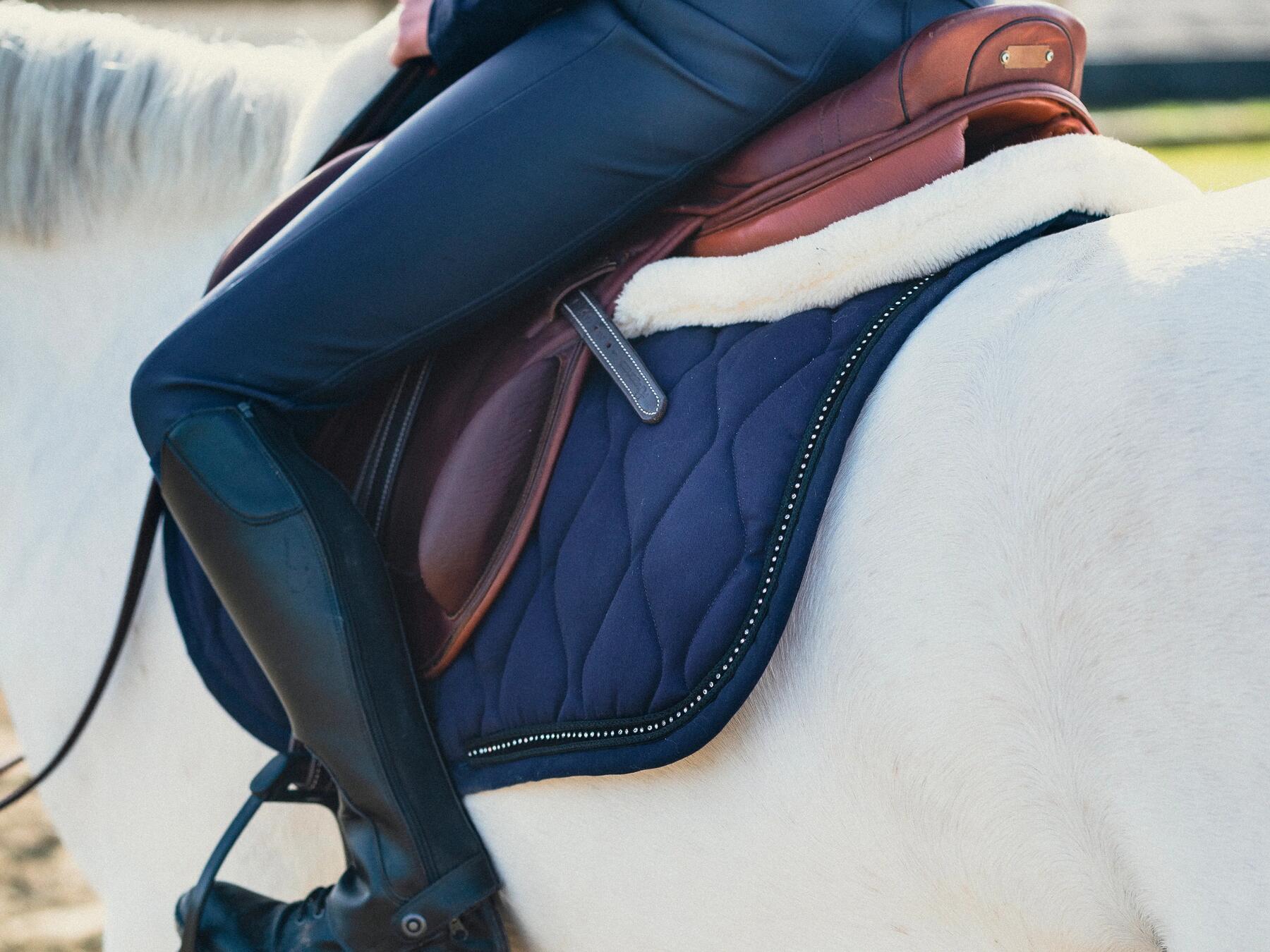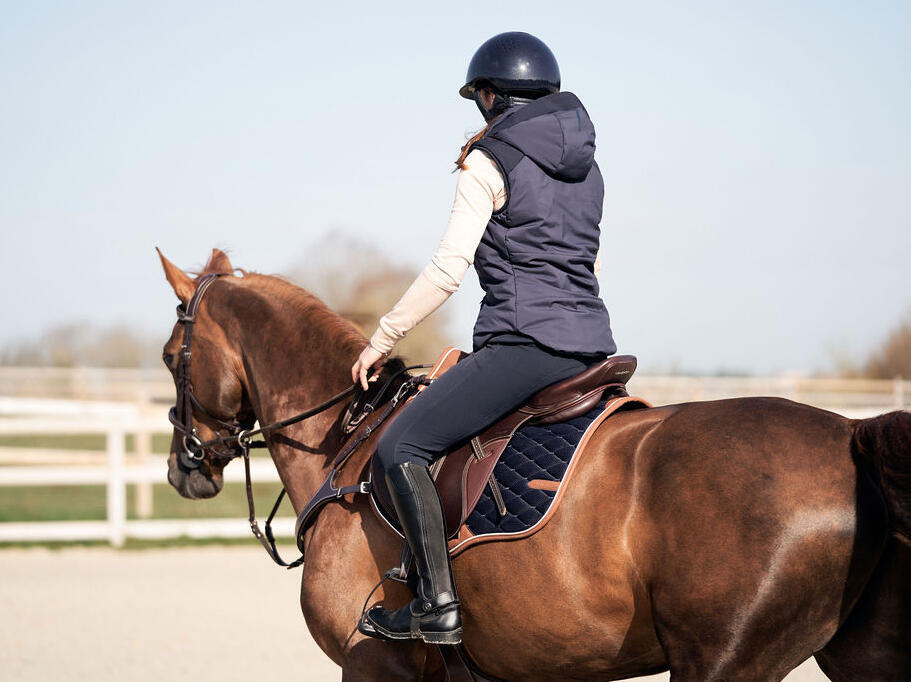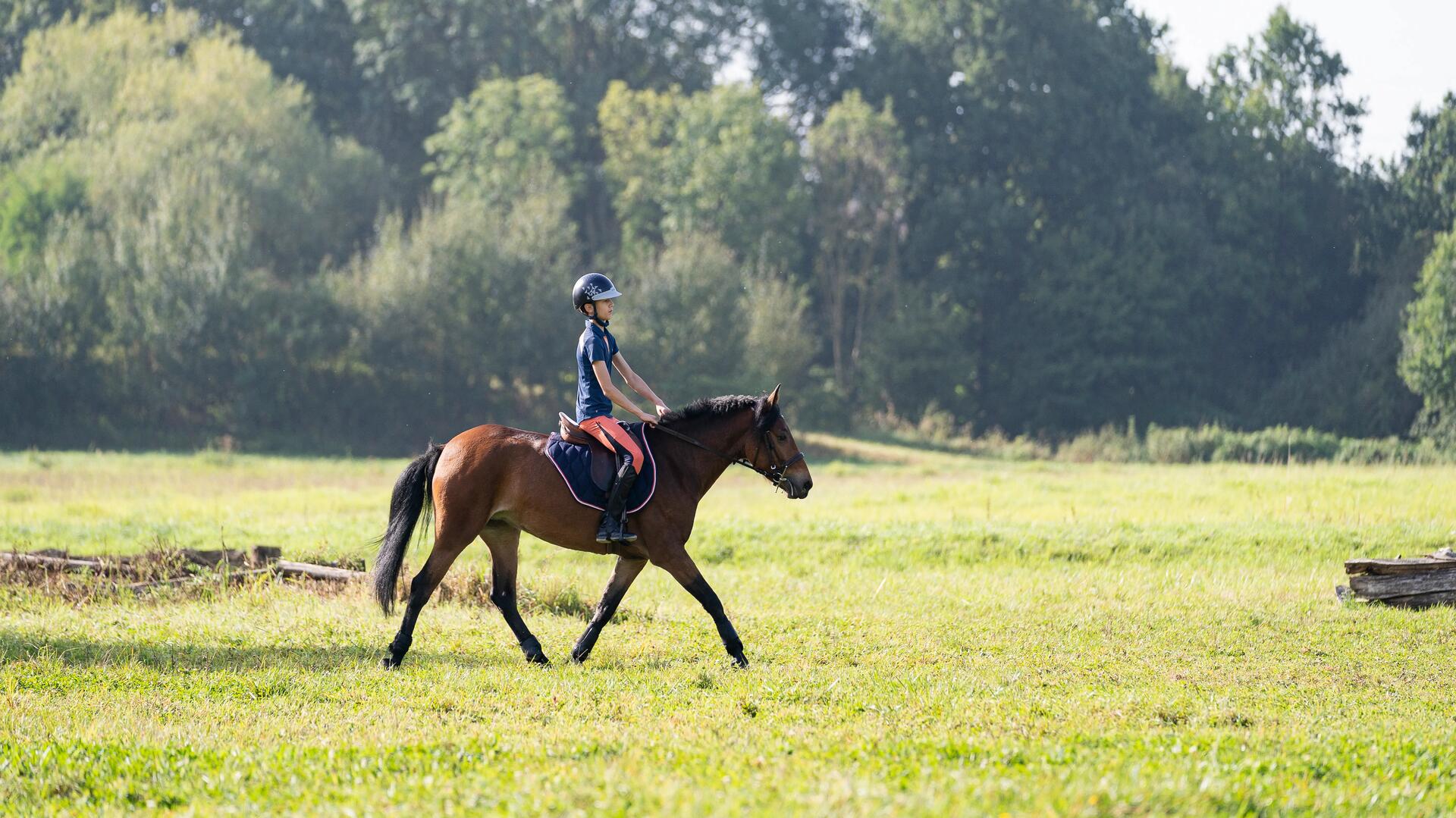Winter riding: Gear up!
Make sure you have the right gear for the season.
To avoid getting too cold, adopt the three-layer technique. You’ll be nice and warm from the start and you can then adjust the layers as the workout intensifies.
- A breathable base layer to keep you dry (ideally made with Merino wool).
- A fleece or down jacket to shield against the cold.
- A protective layer to block the wind and rain.
For particularly harsh winter weather, a riding jacket can serve as layers 2 and 3. The jacket’s long cut covers the lower back while the gussets (side zippers) at the hip optimize comfort when you’re seated in the saddle. This small detail also allows you to better regulate your body temperature.
COVER YOUR HEAD
The body loses most of its heat through the head; so, in periods of intense cold, it’s important to cover your head. Your best bet is to wear a fleece top with an integrated neck warmer and a hood worn under your riding helmet.
PROTECT YOUR HANDS & LEGS
When horseback riding in the winter, you need two pairs of gloves: a very warm pair for the stable and a thinner pair to allow for close contact with the reins while riding. You may also want to consider hand-warmers, especially for longer outings.
Winter riding pants are an essential piece of equipment. Made with thicker fabrics, these pants are often water-resistant and wind-proof. While walking with your horse before and after the session, you can also cover your legs with your horse’s exercise rug or sheet. You take care of them, and they will take care of you!
DON'T FORGET YOUR FEET
As you know, the extremities get cold quickly and more easily than the rest of the body. To avoid having cold feet, go for socks with a high percentage of wool. You will also need boots lined with wool, polyester, or fake fur.
Handy tip: When dismounting from your horse in cold temperatures, try to let yourself down smoothly. If you jump while your feet are cold, you may feel something like a rather unpleasant electric shock.







